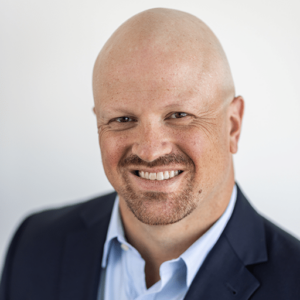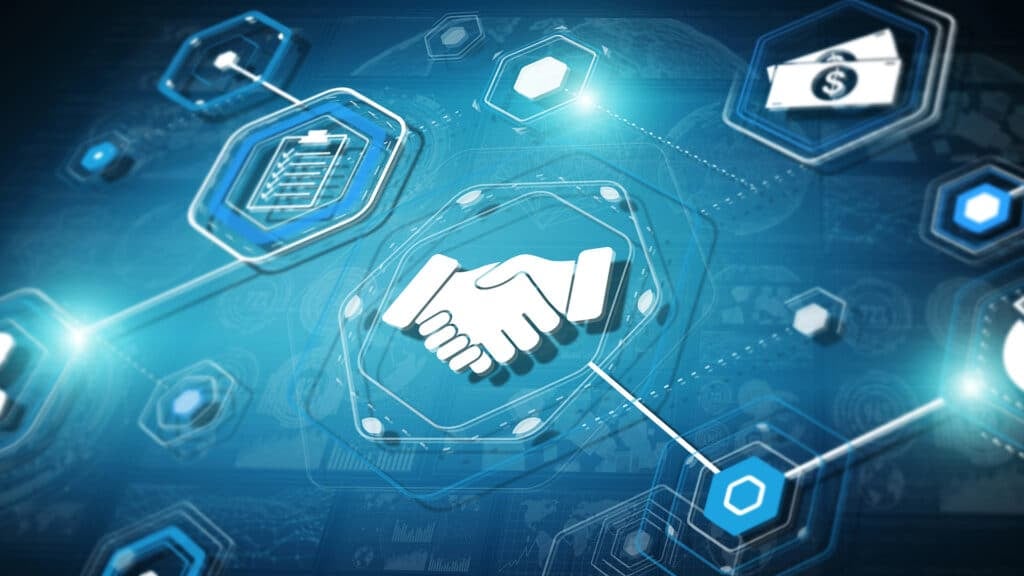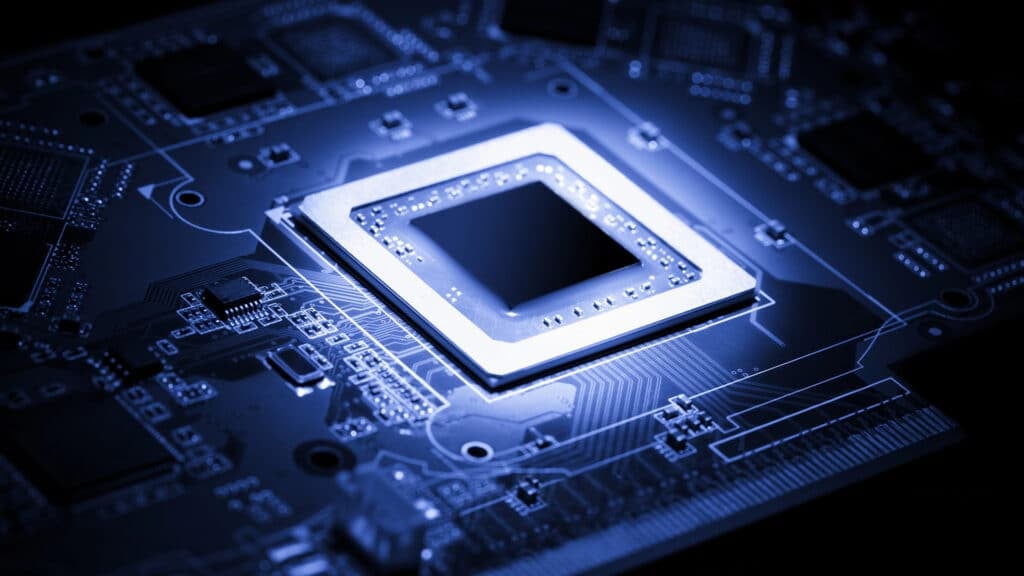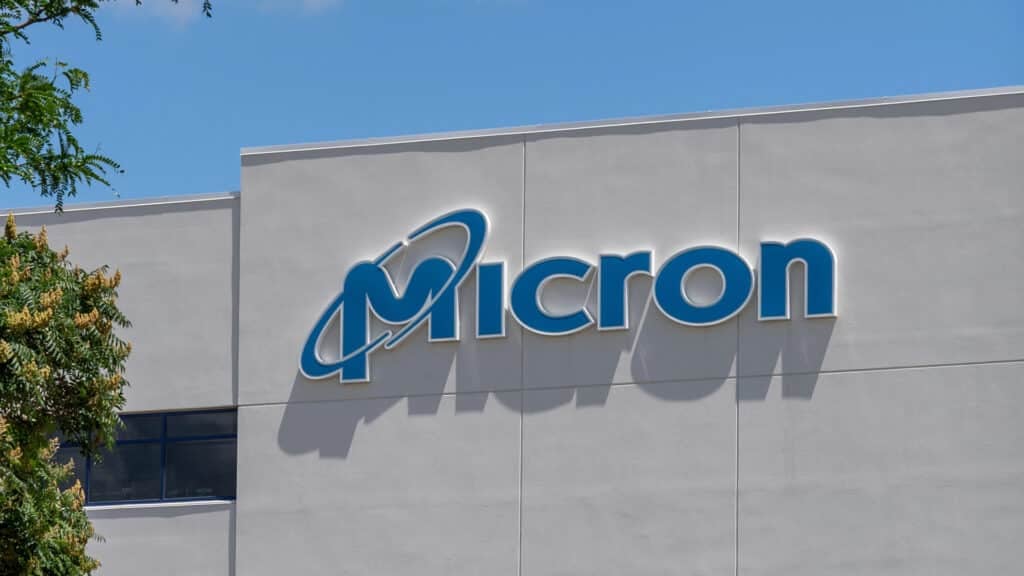Acquisition Close of Cohesity & Veritas – what’s next for customers?
The future of data protection is customer-focused. Patrick Moorhead and Daniel Newman are joined by Cohesity‘s Chief Development Officer, Srinivasan Murari, and Veritas‘ EVP of Engineering, Deepak Mohan, on this episode of the Six Five On The Road, for a conversation on the completion of Cohesity joining forces with Veritas’ enterprise data protection business and what it means for customers.
Their discussion covers:
- How Cohesity and Veritas plan to ensure no customer is left behind and their commitment to support and innovate across all platforms
- Unmatched scale and support: Over 13,000 customers in 140+ countries, 300+ exabytes of data under management, and the largest partner ecosystem in the industry
- AI-powered future: Cohesity’s leading AI capabilities will be a key differentiator, helping customers manage and protect their exploding data volumes
- Future market demands for Cohesity and Veritas, focusing on innovation, data protection as a cybersecurity measure, and the role of AI in managing expanding data volumes
Learn more at Cohesity.
Watch the video below at Six Five Media and be sure to subscribe to our YouTube channel, so you never miss an episode.
Or listen to the audio here:
Disclaimer: Six Five On The Road is for information and entertainment purposes only. Over the course of this webcast, we may talk about companies that are publicly traded and we may even reference that fact and their equity share price, but please do not take anything that we say as a recommendation about what you should do with your investment dollars. We are not investment advisors, and we ask that you do not treat us as such.
Transcript:
Patrick Moorhead: The Six Five is On The Road here at Cohesity Headquarters here in Silicon Valley. It is deal day between Cohesity acquiring the data protection assets of Veritas. Daniel, I love deal days. It’s exciting. We get the chance to talk to leadership, product executives, sales executives. It’s great.
Daniel Newman: Yeah. I mean, look, there’s few things that are more exciting, big deals, IPOs. These are just those moments where you see the coming together, you see innovation, you see scale, you see the excitement. Of course, on every deal day there’s tons of enthusiasm. Everyone’s wondering what is it going to mean? Is it going to be successful? That’s where we come in as the analysts, we get to make that call. But yeah, I mean, what a great day. And by the way, for everyone out there, you can’t see it, but the enthusiasm around this place it’s really incredible.
Patrick Moorhead: It is incredible. And deal days are fun, but doing deal days in the most relevant spaces like data protection, data resiliency, I mean it seems like every month there’s something that comes up in the headlines.
Daniel Newman: AI, cybersecurity.
Patrick Moorhead: Exactly. Something that comes up in the headlines. It kind of reminds you, hey, data, if it’s truly, if you think it’s the new oil, needs to be activated on as an enterprise and protected, you need to be taking it more seriously. And it’s not a technical conversation. It should be a CEO-level conversation.
Daniel Newman: Absolutely.
Patrick Moorhead: Yeah. So with that, it’s my pleasure to introduce the product and engineering executives, Deepak and Murari. Great to see you guys.
Deepak Mohan: Pleasure to be here.
Patrick Moorhead: Yeah, it’s exciting stuff.
Daniel Newman: Yeah, it’s so fun. I’m really glad we’re going to have the chance to have the conversation. Pat and I often debate, and in public we always get along, but we have many debates. And one of the big debates is always when these combinations happen, is it good, is it bad? And of course when we’re talking on TV and we’re talking to the press, they’re always asking us these questions. Well, I want to ask you a question. Look, we talked to your competitors, we’re out and about, and they’re trying to create some FUD and some fear and tell people, “Hey, it’s not going to go well and you should be worried. And when competitors like this combine and get bigger, you’d be safer coming over here to us.” That’s what’s being said Murari. Are your competitors… What do you have to say about all that and kind of FUD and all that fear that’s being created out there about this new, bigger, stronger Cohesity?
Srinivasan Murari: Sure. So our businesses are very complementary. Our products are very complementary. The markets we play in are pretty complementary. So the benefits our customers will see is that they will see the strength of both companies come together to sell their needs. We’ve been very clear that no customer is going to be left behind, nor will we force them into any kind of migration as well. So we’re really excited that we’re coming together today to make this happen. What do you have to add, Deepak?
Deepak Mohan: Yeah, so Veritas customers have nothing to worry about. So I’ve personally been in this industry for over 25 years, and with NetBackup over 20. And NetBackup as a platform has continued to evolve. It used to be backup to tape, and then it was backup to disk and then VM backups, cloud backups, multi-cloud backups. And now with the combined technologies, we will continue to evolve the platform. So customers have no need to think about forklift upgrades or having to migrate. Our goal is we will continue to provide additional value and as customers choose to take advantage of these values, they’ll continue to move to newer versions and we’ll get value from both the platforms together.
Srinivasan Murari: And we will support you no matter how you choose to deploy the product. Right? Whether it’s disaggregated, in hyperconverged or in the cloud, we are here to make you successful and we’re here to sell you.
Patrick Moorhead: Yeah, the no customer left behind is a huge commitment. I mean, we heard it from Sanjay, the highest levels of the company and everybody down there including customer support needs to understand that. But ultimately getting on the same platform is a positive thing. I’m curious, what is the timeframe to get customers on the same platform?
Deepak Mohan: So there is no timeframe. Like I said before, our customers will not move because we tell them to move. They will move on their journey based on the value we provide. So think about it this way, where customers, we will provide joint value, we will get to, say a common management plan, and we can do that because our platforms are API-driven. Likewise, as we get to more workload support, the data protect platform supports many workloads. The NetBackup platform supports many more workloads. Using a common connector framework, we provide those workload support to both sets of customers. And as we do more innovation and security AI, both our customer base will get advantage of that. So there’s no need for any migration. A customer experience will start at the top, it’ll be unified, and we’ll take care of all the complexities under the hood.
Srinivasan Murari: Yeah. And speaking of APIs, here’s a good example of no customer left behind. We have large enterprise customers, both of us, both of our companies I mean, and they’ve built a lot of automation around our respective APIs because they don’t really use the UIs as much. They’re fairly extensive workflows. And our commitment to both customers is regardless of what automation you’ve built, you can continue using that forever. You don’t need to move off of it. That’s an example of a commitment we make.
Patrick Moorhead: A follow-up to that. What are the benefits to customers moving to a more modern environment if it’s not obvious to everybody? But I think it’s an important thing to talk through, particularly your product and engineering leaders or executives here.
Deepak Mohan: So our customers today, they’re all moving to the cloud. They’re all facing cyber challenges. And in order to really do that well or protect your entire cloud infrastructure, protect it cost-effectively, protect the cyber use cases, you have to move to a modern platform. Things that backup could do five years ago is good, but it’s not as cyber-resilient as what the combined solutions are.
Patrick Moorhead: Right.
Deepak Mohan: So it’s really important for our customers to move to the latest and greatest technologies. That’s the combination that’s into Cohesity.
Patrick Moorhead: Yeah, it makes sense. There’s probably an economic reason. I mean, listen, security is about one… As we’ve seen every week, every month there’s economic ramifications about not having cyber resiliency. So there’s a lot of economic benefits to that as well.
Srinivasan Murari: Adding more to what Deepak had to say, one of the value propositions of hyperconvergence is that compute and storage are together in the same appliance. So it is very easy to set up the appliance and manage it. Traditionally, in a traditional deployment, you would have a compute admin and a storage admin, and to get things done, you’d have to talk to all of these people. Now, with an appliance, one backup admin can do all of those tasks without having to talk to the other people. So you get agility as far as the business is concerned, and that’s on top of the TCO savings. And the other thing with hyperconvert, and particularly the file systems that we have that’s unique to the platform is that the speed of recovery from a cyber event is 10 times faster than our closest competitor.
Daniel Newman: Excellent. So Murari, I want to go back. We were sort of talking about the no customer left behind. There’s kind of this sentiment of whatever you’re doing now, you don’t have to change. And I think that creates a little bit of a comfort going back to what I said about what’s going to happen. Having said that, I also hear a lot about speed, scale, innovation. And if that’s going to happen, you can’t have all your customers running on disparate systems and some modernizing at really slow pace. How do you juggle that complexity? Because I’m kind of hearing that ultimately to really get the value out of this deal, you’re going to have to streamline, you’re going to have to maybe even move to one platform. So can you sort walk us through how you’re going to approach that, not leave them behind, not force the move, but ultimately get that benefit of scale?
Srinivasan Murari: Sure. So let me give you an analogy that’ll help this, right? In the enterprise space, I’ve heard a lot of customers saying, “Why are you exposing your organization structure to me?” Right? Yeah. And this combination is bringing two companies together. So in addition to our commitment that no customer is going to be left behind, one of the things for the customer is that we will give them a singular user experience starting today. There will be one way to log into the product, the combined product, there would be one way to get support, there would be one way to get reports, and so on and so forth. So while this is what the customer sees, think of it as a house with two rooms and there’s a connection between the two rooms. We work together closely behind the two rooms to make it all look seamless. But for the customer, it looks like one house with one door.
Patrick Moorhead: I love analogies.
Daniel Newman: No, it’s good.
Deepak Mohan: And now I’ll add to that. So a little bit more from a technical perspective, we can get to that common frontend using micro frontends using angular, loadable libraries. So it’s not difficult to get our Helios and Alta View platforms combined. And then in terms of value for our customers, we are going to be a team of over 2,000 engineers. So that is scale. And we have 2,000 engineers innovating in this security cyber area, the multi-cloud, hybrid cloud area, and in AI. And all this translates to tremendous value for our customers, because what are our customers looking for? Every customer has got a different cloud database, SaaS application, the cloud service provider. In a different country, you have compliance requirements. The cyber resiliency game keeps running at a very fast pace. We have the REDLab where we are doing cyber research related to ransomware, and then with AI. So customers will see tremendous value and much, much faster innovation because we are no longer duplicating the effort. Until yesterday we were having two teams working on the same stuff. But now we can take those engineers and have them work on different innovations. So that will increase the net speed of delivery to our customers.
Srinivasan Murari: That’s right. That’s a lot of innovation we can bring to bear. And if you look at data protection as a space, one thing that’s happening with our customers is they’re generating a lot of data every single day, and they’re generating a lot of data in the hope that they will need to recover it at some point in time. And historically, you’ve recovered data because your infrastructure failed or your application went down. Now increasingly, as Deepak pointed out, there’s a lot of cyber events going on. There’s not a single day or week that goes by where you don’t hear about a cyber event. So at that point, speed of recovery and being able to recover at scale is very important. Our large enterprise customers have petabytes of data under management, and they cannot afford to be done for more than a few hours. Together today, we are able to give them the assurance that no matter where they are, they will be protected and recover from such events quickly.
Patrick Moorhead: I appreciate you outlining that. So I’m going to play this back. So far, no customer left behind, meaning not going to force customers to move to environments that they don’t want to. Move at your own pace. You’re going to build a door, one door that gets you into both environments, and you’re going to create enough value for them to move to a more modern environment or modern platform. You had mentioned something I think, Deepak, on cloud. Cloud spend is, I mean, it’s been, I would say out of control for five years and out of control is just it’s not what they thought they would sign up for. We didn’t put enough controls on how it was spent. Are you doing anything to reduce those costs in this new world?
Deepak Mohan: The answer is absolutely yes. So data protection backup, the cost can spiral out of control if not done right. So if you just took snapshots and you backed them up, that’s very expensive. In our modern architecture, we are using an elastic, microservices, containerized ecosystem in the back that can scale up when needed. So if you’re doing a lot of backups where you have to do fast recoveries, you just instantiate more compute and more storage. And well, but when you’re not doing anything, all that thing settles down. So that’s a very, very cost-effective way to use the cloud. Likewise, in terms of storage tiering layers, deduplication, our architecture does that really well. So we are, I’ll say, minimizing the cost of cloud at every little point. So again, once again, it comes to the model architecture that really helps customers manage the cost of data protection in the cloud.
Daniel Newman: Yeah, I appreciate that.
Srinivasan Murari: Adding to that, we also have customers, some customers want dedicated infrastructure for themselves. Then there are other customers who are more cost sensitive and we are able to, through offering multi-tenancy, we are able to have more customers and therefore we are able to lower costs for them. Because the cost of the infrastructure is amortized over the entire set of customers that we have.
Daniel Newman: I appreciate that.
Deepak Mohan: One more thing I would like to add is that this data protection and cyber is getting extremely complex and many of the customers we speak to, they really were telling Cohesity, “Hey, you do it for us.” So as a result are as a service offering, backup as a service, those are very exciting offerings we have on the market. And whether they’re related to M 365 backup, Salesforce, Google Cloud platform or related to the databases, the cloud databases, we can do that job for you through our Backup-as-a-Service offerings. So once again, it’s like, look, it’s too complicated. Customers don’t want to do it, give it to us. We’ll take care of it for you.
Daniel Newman: Well, gentlemen, as we sort of pull this together, we wrap up. I’d love to kind of dive just a little bit into what you think. You started to allude… Deepak, you actually kind of teased the answer to the question a bit. What’s the market going to be really asking you for? I’d like to just hear from both of you a bit. You talk to customers, you’re driving the product, you’re driving the engineering, and of course you’re partnering closely with those that are taking you to market. What is the market going to demand of this newer, bigger, faster, stronger, did I get them all right, Cohesity that you’re both so enthusiastic about?
Deepak Mohan: Yeah, I’ll say I’d put it in three buckets. The first is cloud. We spoke about the cloud. Every customer needs cloud to be protected. Protected at the right cost model, all the different platforms, geolocations, in-country compliance, lots of stuff, get that right. Second is cyber resiliency, ransomware protection. The security software is good enough, but we see all the incidents happening. So data protection is your last resort. We will continue to innovate heavily in that area. And the third I look at it is AI. And AI is in two categories. Like we already mentioned earlier, first is business insights. We’ve got all this data. What can we figure out from a business perspective? And the second one I call is operational insights, where I don’t think there’s an IT person in this world that can actually create any policies to protect the entire estate. They need AI to make sure that the entire estate is protected, recoverable. So I think those are the three buckets where that’s what the customers will continue to demand from us, and we will continue to invest heavily in.
Srinivasan Murari: That’s right. Together we have hundreds of exabytes under management across both companies. And particularly when it comes to AI, more data is better.
Daniel Newman: Absolutely.
Srinivasan Murari: And it’s not just more data, but different kinds of data is even better.
Daniel Newman: More good data.
Srinivasan Murari: That’s right. So when it comes to generative AI and data insights in particular, you’re able to give more holistic answers to questions that are actually meaningful to the customer when all the data is managed in a single platform. So going back to what the combination offers today, because we have the broadest workload coverage among all the choices that are available to our customers today, and the large quantity of data that we can manage for each and every customer today, we will be able to offer the most value to them today and beyond.
Daniel Newman: Yeah, hundreds of exabytes, 500-plus connectors. I’m getting this down.
Patrick Moorhead: Oh, you are?
Daniel Newman: I’m getting this down. Well, Deepak and Murari, I want to thank you so much for taking the time. We know it’s a big day. I’m sure your teams and your customers are ringing you up and wanting to hear more about this. Hopefully everyone out there had the chance to really stick with us and follow us throughout the day. I’ll look forward to chatting to you both soon and kind of following the journey and seeing how the product continues to evolve. And congratulations again to both of you.
Srinivasan Murari: Thank you.
Deepak Mohan: Thank you. And thank you for talking to us. And for our customers, we are here for you. So please reach out to me directly. Reach out to Murari directly. We are here for you to answer any questions, any concerns. Absolutely happy to talk to our customers directly.
Daniel Newman: And we absolutely love it. And Sanjay himself made the same declaration, hands-on leadership across the board here at Cohesity. We hope everybody’s enjoyed these conversations. Subscribe and if you didn’t watch them all, it’s time to go back and watch them all. This was a big day, a big deal. We are here at Cohesity Headquarters in San Jose on deal day. Big news, stick with The Six Five. For Patrick and myself, it’s time to say goodbye. We’ll see you all soon.
Author Information
Daniel is the CEO of The Futurum Group. Living his life at the intersection of people and technology, Daniel works with the world’s largest technology brands exploring Digital Transformation and how it is influencing the enterprise.
From the leading edge of AI to global technology policy, Daniel makes the connections between business, people and tech that are required for companies to benefit most from their technology investments. Daniel is a top 5 globally ranked industry analyst and his ideas are regularly cited or shared in television appearances by CNBC, Bloomberg, Wall Street Journal and hundreds of other sites around the world.
A 7x Best-Selling Author including his most recent book “Human/Machine.” Daniel is also a Forbes and MarketWatch (Dow Jones) contributor.
An MBA and Former Graduate Adjunct Faculty, Daniel is an Austin Texas transplant after 40 years in Chicago. His speaking takes him around the world each year as he shares his vision of the role technology will play in our future.










